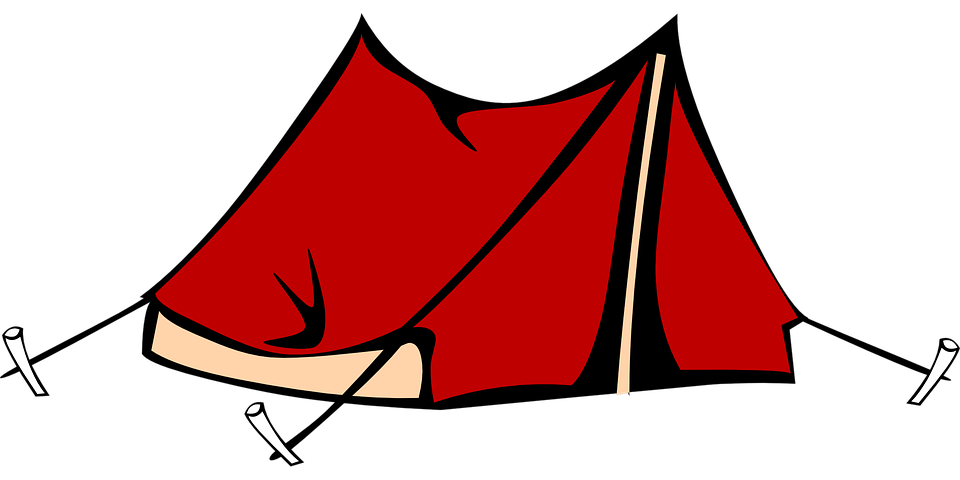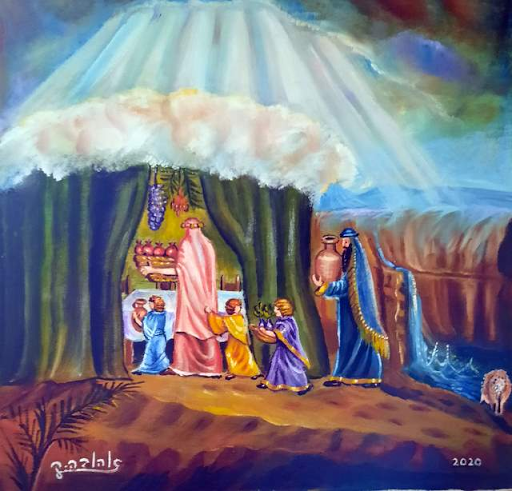
For the collection of articles in Hebrew about Sukkot on the 'Knowledge' site, click here

Rabbi Dr. Yossi Feintuch was born in Afula and holds a Ph.D. in American history from Emory University in Atlanta. He taught American history at Ben-Gurion University.
Author of the book US Policy on Jerusalem (JCCO).
He now serves as rabbi at the Jewish Center in central Oregon. (JCCO).
* * *
The Jewish prayer book opens up the daily morning prayer service with a line from Balaam’s lofty poetry that describes and praises the Israelite people camping east of the Jordan River with: “How goodly are your tents , O Y’aakov, your dwelling places O Israel’’ (Numbers 24:5). What Balaam saw in front of him were Israelite tents, not booths, for this is where they dwelled. Rashi, a pre-eminent Torah commentator, refers to Balaam’s observation by pointing out that the entrance to each tent did not face another entrance for the sake of modesty and that was what Balaam lauded in this iconic verse. Indeed, the big picture here is that the Israelites during their 40-year-long journey from Egypt to the Promised Land dwelled in tents rather than in huts.

Yet the festival of Sukkot commemorates the dwelling in huts which logistically would be a kind of dwelling whose construction materials and carrying them would be incompatible with a long track through a desert like Sinai. The Torah to be sure is strewn with multiple references to the tent-dwelling Israelites.
The following examples are good indicators of this prevalent reality:
Soon after the Israelite exodus from Egypt they were informed of their staple sustenance, the manna, that would supersede the by-now exhausted little amount of flour that they brought with them upon leaving Egypt. Hence every person was entitled to gather daily ‘’an omer apiece according to the number of persons each of you has in his tent” (Exodus 16:16).
![[In the picture: The Miracle of The man, a painting from 1577. The picture is in the public domain]](https://www.xn--7dbl2a.com/wp-content/uploads/2022/10/נס-המן.jpg)
Moses too lived in a tent; And ‘’whenever Moses went out to the tent, that all the people would arise and stand, each at the entrance of his tent, and gaze after Moses until he entered the tent’’ (Ex. 33:8).
Eating the manna daily became pretty soon boring resulting in a public protest as Moses ‘’heard the people weeping throughout their families, each man at the doorway of his tent’’ (Numbers 11:10).
And when another rebellion followed, the Korah mutiny, Moses warned the Israelites who were swayed by Korah and his ring leaders: “Depart now from the tents of these wicked men, and touch nothing that belongs to them, or you will be swept away in all their sin”… Dathan and Abiram went out erect at the entrance of their tents… (Numbers 16:26-27).
![[In the picture: Mered Korah... The owner of the rights to this picture has not been located. Therefore, the use is made according to Article 27A of the Copyright Law. The main copyright holder, please contact: yehezkeally@gmail.com]](https://www.xn--7dbl2a.com/wp-content/uploads/2021/01/קורח-ועדתו.png)
Notably, the image of the Sanctuary that God commanded the Israelites to make so God could ''dwell' among them was revealed visually to Moses in the form of a tent, the Tent of Meeting, and not a hut.
Where, then, do we get the idea that the Israelites dwelled in huts en route to the Promised Land, and for that reason it is incumbent on them to celebrate ‘’a festival for the Eternal, a seven-day period in the year, an eternal decree for your generations…you shall dwell in booths for a seven-day period; every native in Israel shall dwell in booths. So that your generations will know that I made the Children of Israel to dwell in booths when I took them from the land of Egypt’’ (Leviticus 23:41-43)? No further references are found in the Torah to Israelites living in huts during their journey from Egypt to the land of Israel. Only the historically late (post First Temple) Book of Nehemiah refers to this one place in the Torah that mention booths which inspired the people to make ‘’themselves booths, every one up on the roof of his house, and in their courts [in Jerusalem, so]… all the congregation of them that were come back out of the captivity [late 500s BCE) made booths, and dwelt in the booths; for since the days of Joshua the son of Nun unto that day had not the children of Israel done so’’ (Nehemiah 8:16-17).

Significantly, when the Maccabees liberated the Temple from its occupation (and defilement) by the Syrian-Greeks on Kislev 25th 164 BCE ‘’they celebrated the [Temple renewal] Festival to the Lord for eight days, like the festival of Sukkot, and they remembered the previous days when they celebrated of the festival of Sukkot in the mountains and in the caves, and they went out in the wilderness, like animals of the field. And they took the willows of the brook and the branches of palm trees, and sang a song of praise and thanksgiving to the Lord, who gave them courage and salvation to purify the temple of his holiness’’ (2nd Book of Maccabees 10:9-10). Notably, we do not read here of any sukkot building, even as two of the Four Species are mentioned as a part of the first Sukkot celebration once the Temple was liberated by the Maccabees.
Even preeminent Torah commentators – Rashi, Onkelos and Ramban (Nachmanides)-- do not see huts in this sole Torah reference to Sukkot as a dwelling place in the desert. Rather the ''Sukkot'' were ‘’the miraculous clouds of glory that protected the nation during those years’’ (The Stone Chumash). Other commentators, Ibn Ezra and Rashbam, posit that the verse in Leviticus does mean huts.

Contemporary Torah commentator Robert Alter (basing his remarks on Jacob Milgrom's) posits that huts began their association with the biblical pilgrimage festival of Sukkot at the central sanctuary after the conquest of the Promised Land by Joshua. Since the various towns where such a center was located (i.e., Gilgal, Shiloh, Nov and Givon prior to King Solomon's establishing Jerusalem as the ultimate center) could not provide adequate lodging for most pilgrims, the celebrants had to make do with constructing hovels for their accommodation during the seven-day holiday; hence the late genesis of introducing huts as a foremost symbol of ‘’the festival of the Ingathering at the close of the year, when you gather in your work from the field’’ (Exodus 23:16). Given the scriptural evidence cited above it seems reasonable to infer that associating the dwelling in booths of the Israelites during their long journey through the Sinai desert was rather a late development that was projected retrospectively on the days of Sinai.
For the collection of articles in Hebrew about Sukkot on the 'Knowledge' site, click here
מצאת טעות בכתבה? הבחנת בהפרה של זכויות יוצרים? נתקלת בדבר מה שאיננו ראוי? אנא, דווח לנו!


